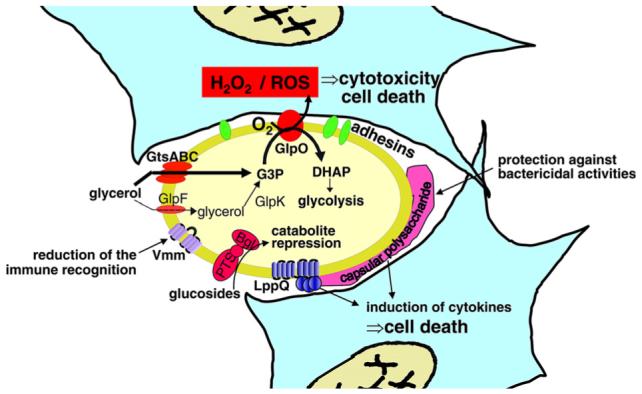Fig. 1.

Schematic representation of the various virulence pathways of M. mycoides subsp. mycoides SC. The mycoplasma is represented in yellow, the host cells in light blue. The upper pathway, which is currently the best characterized, is based on glycerol import and metabolism. GtsABC represents the membrane-located ATP-binding cassette (ABC) transporter system, which incorporates and phosphorylates imported glycerol to glycerol-3-phosphate (G3P). The bypass pathway that allows diffusion of glycerol via the glycerol facilitator factor (GlpF) and the subsequent phosphorylation by the glycerol kinase (GlpK) has not been evidenced directly, but the corresponding genes, glpF and glpK, have been found by cloning and DNA sequence analysis, and their functionality was supported by strains lacking functional gtsABC genes, which can import and phosphorylate glycerol. The membrane-located l-α-glycerophosphate oxidase (GlpO) represents the central enzyme in this virulence pathway and is able to translocate H2O2 or reactive oxygen species (ROS) into the host cell. The adhesins that seem necessary for the close contact are still hypothetical. The variable surface antigen (Vmm) is supposed to play a role in evading the host’s immune defence. Capsular polysaccharide has been proposed to be produced by most Mycoplasma species and is expected to induce cytokine production. Lipoprotein LppQ is highly antigenic and also seems to be involved in the induction of inflammatory processes by superantigen-like properties. Catabolism of glucosides by the phosphotransferase system (PTS) and 6-phospho-β-glucosidase (Bgl) is known to repress virulence of many pathogens.
